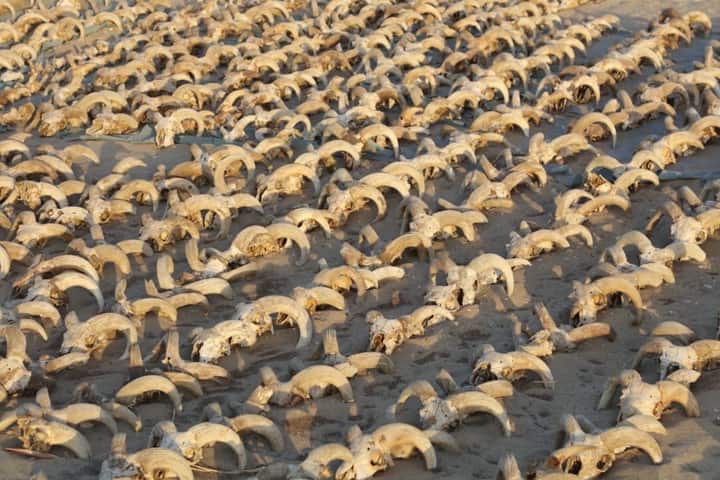Anything associated with Ramses II, considered one of the greatest Egyptian pharaohs, always generates interest not just among historians but also the general public. This New Kingdom ruler, also known as Ramesses the Great, distinguished himself for his military campaigns and strategies, high-class diplomacy, and making the kingdom prosperous.
Born in 1303 BC, Ramses II was the third ruler of the Nineteenth Dynasty and passed away in 1213 and from then his status as a celebrity continues and now a recent discovery pertaining to the Ptolemaic period, that 1,000 years after his death, brings him to limelight as per a smithsonianmag.com report.
In this recent find archaeologists from Institute for the Study of the Ancient World, New York University, have found 2,000 mummified ram skulls at a temple in Abydos, an ancient city. This vast collection surprised even the Egyptologists.
Sharing details about the find, Ahmed Shawkat, the leader of the team told the media: “We came across some random pieces of skulls first. We didn’t know what they were, but as we continued our excavation and exploration, all of [a] sudden we found a whole area filled with ram skulls.”
The statement released by Egypt’s Ministry of Tourism and Antiquities suggested that these skulls were offered to the ruler for his afterlife journey.
These 2,000 skulls along with that of mummified cows, goats, mongooses, dogs, and gazelles belong to a much later period. This shows the reverence and respect people had for Ramses II even after hundreds of years including the Ptolemaic period.
Ptolemaic period – 332 BCE to 30 BCE — came into being after the passing of Alexander the Great in 323 BCE. The regions he had won around the Mediterranean were split up among his generals. Ptolemy got Egypt and he declared himself pharaoh and with him began what is considered the last dynasty of this ancient civilisation.
Though Abydos is where many pharaohs before Ramses II were buried, he was not. This temple was made during his 66-year rule and it was dedicated to the Egyptian god of the deceased, Osiris and his father Seti I who ruled from 1294 to 1279 BC.
Apart from mummified skulls of animals, researchers also found bricks that came from a wall which dates back to the Old Kingdom. This period was much before Ramses II ruled. They are unsure as to why this was constructed.
As per Iskander: “It’s possible that this was a wall of the ancient Abydos, which was never found. Could it be something else? Maybe that’s what we are working on now.”
Terming it an important find, Iskander added that this could help “re-establish the sense of the ancient landscape of Abydos before the construction of the Ramses II temple.”




















